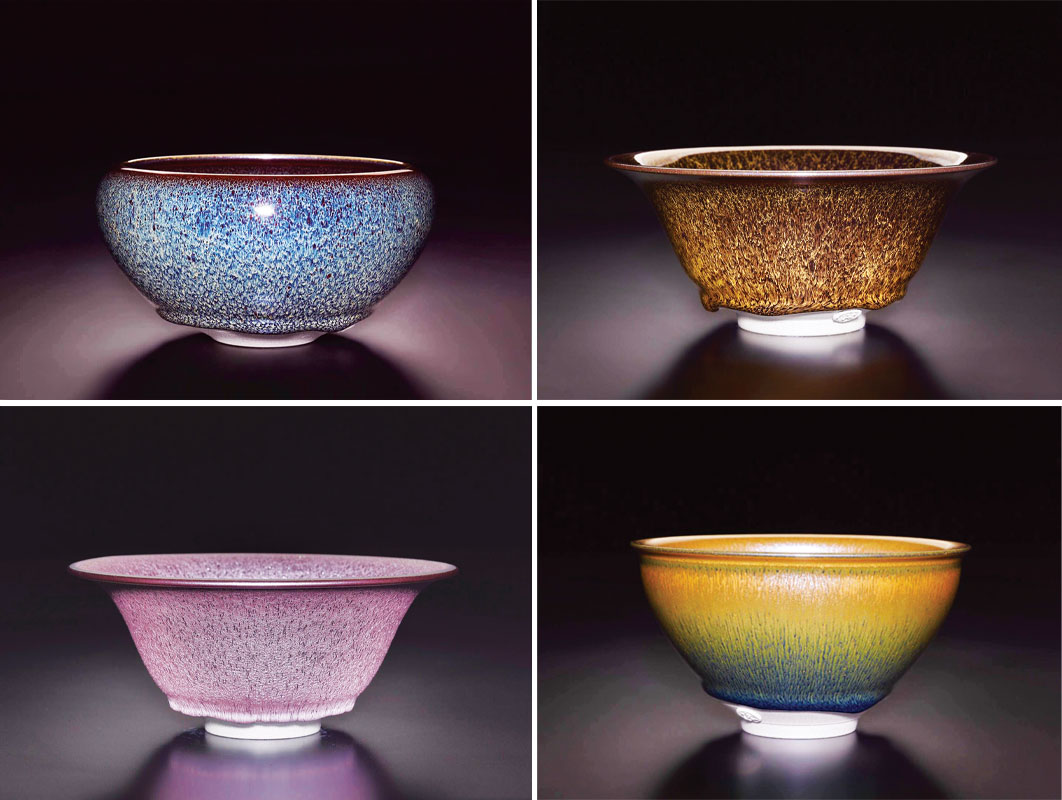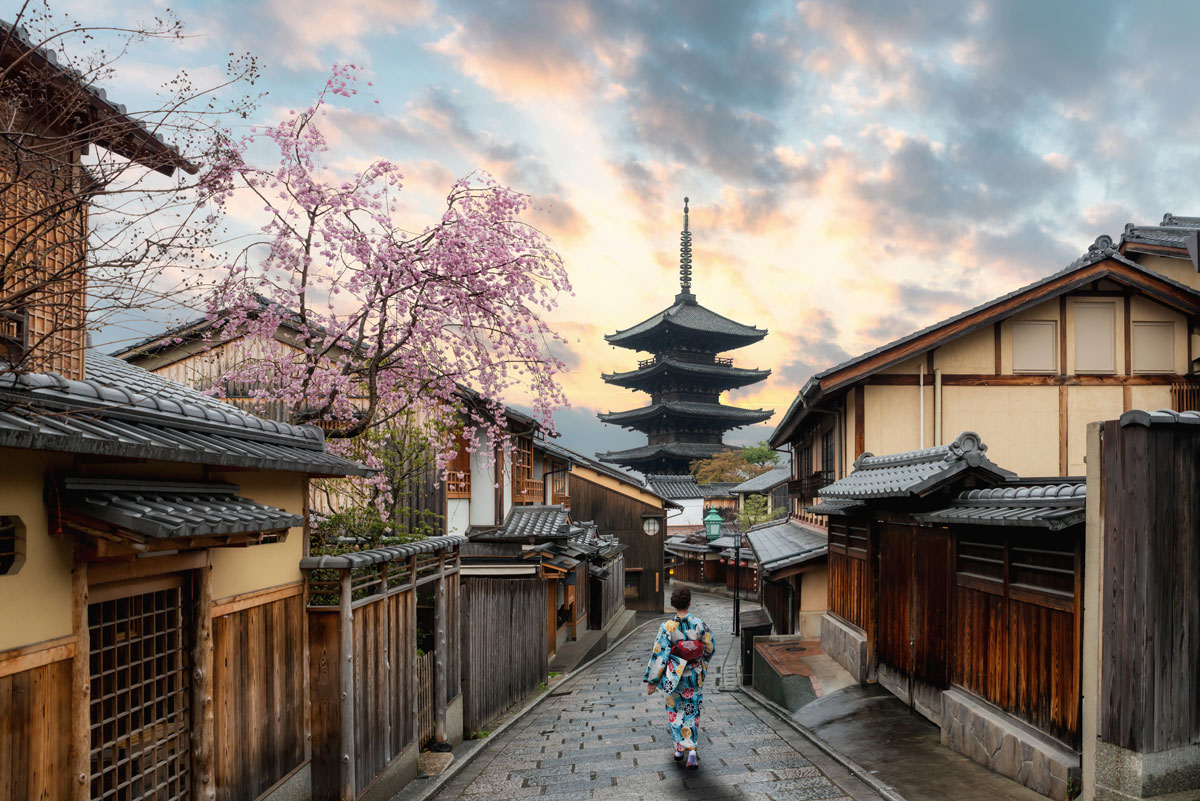
A Tenmoku Master Revives the Lost Treasure from Song Dynasty
A Colourful World in a Bowl
- Text by David Lee
- Photos Courtesy of Jiang Youting
It is extremely difficult to fire Tenmoku tea bowls. Only under the subtle blend of the glaze and kiln fire, and in an accidental way, can the black background create such a mysterious brilliance. At present, only three pieces have been passed down from history. They are all in Japan. According to historical records, in the Kamakura period in Japan, Japanese monks once went to Tianmu Mountain, Zhejiang, to study. They brought Yohen Tenmoku back to Japan. It thus got its name. Since then, it has been regarded as “the first famed bowl in the world,” and it’s considered extremely precious.
In the history of Chinese ceramics, the Song Dynasty’s Tenmoku pottery is legendary. It was said in the past that one precious Tenmoku piece could be traded for an entire city. When light refracted on it, Tenmoku looked like a starry sky, with ever-changing colour and texture, reminding people of the cosmos. As the technique was lost in the Song Dynasty, its sacred legacy melted into legend. Thirty years ago in Taiwan, artist Jiang Youting joined a group of artisans reviving the lost art of Tenmoku. While other artisans were able to make brown and black Tenmoku pottery, Jiang unintentionally made a historical breakthrough.

10,000 Times
Jiang, now in his 60s, has spent half of his life firing Tenmoku tea pottery. He still remembers the first time he encountered Tenmoku-glazed pottery.
“The first time I heard a professor talking about Tenmoku glaze, I felt something in my heart when I heard the term. I had goosebumps. I was tingling all over my body to the top of my head. I didn’t know why,” he says.
Tenmoku originated in the Tang and Song dynasties; it’s one of the three most famous glazes in China. Firing it is so difficult, there’s a saying, “One may have to fail 10,000 times to produce one bowl.”
Jiang started to experiment using the glaze formula his teacher had learned from Japan. The formula his professor gave him was the Song Dynasty “oil-spot tenmoku,” which has patterns that look like oil drops on water.
After studying and visiting numerous ceramic artists and seeing how they work with their kilns, Jiang focused all his efforts into constructing his own Tenmoku kiln, and learning how to connect with it.

Firing without intention
Living an ascetic lifestyle in the mountains, Jiang works alone in his studio eight hours a day. He never listens to music, so that he can hear the kiln and be attuned to his craft.
To master the kiln, Jiang chooses to stay humble before it. He removes his own objectives from the creative process. Being in that peaceful state enables him to listen to the kiln, understand how to intuitively work the clay, and it allows the wisdom of the cosmos to move through his fingertips.
“Unlike other artistic creations, when we fire ceramics, we don’t need human creativity, but just to execute every technique just right,” Jiang says. The idea of executing perfection takes years of mastery. For example, just creating the perfectly shaped bowls takes five years of practice.
“To make simple things done just right, that is unique,” he says.
After innumerable failures, and with continual persistence, Jiang not only perfected his skills in making Tenmoku pottery, he also unintentionally cracked the code for creating Tenmoku with radiant colours—for the first time in history.


A hidden spectrum
“One day, I noticed a deep purple colour appearing in one of the tea bowls,” Jiang says. Noticing the colour, he repeated the firing process, and discovered that “it is not just one colour, but a world of colours.” Jiang says that “later, the colour blue also appeared, and when I try to fire for the blue colour, red appeared at the same time. Colours just popped out one by one. All colours were there—red, orange, yellow, green, blue, enamel, purple, gold, and silver.”
He realized that the colour black was a combination of all the colours blended together. So he began to strip away the colours, one by one, creating Tenmoku pottery in hues that hadn’t been seen before. “It’s like the colours have been hidden for a thousand years, so I named it ‘Cang Se Tenmoku (hidden-colour Tenmoku),’” he says. His Cang Se Tenmoku can produce an array of colours, or can even create up to seven colours in a single bowl.
When you turn the bowl in your hands, the glaze will reflect colourful luster, with a softer texture than before.
“Many people assume that I have experimented greatly with my techniques, since I am able to fire pottery with so many colours,” Jiang says. “I didn’t. I just control key points and make changes within a certain range.”

Simple things done just right
Being a potter for more than 30 years,
I do not decorate the clay;
Only one glaze is applied,
The ware’s shape is round;
No thoughts nor creation,
Just fire with no intention.
This short poem by Jiang summarizes his career of pottery art. He says only the first sentence has been revised in his long career—from 10 years to 20 to 30.
While today’s artisans create pottery in unconventional and complicated shapes, Jiang goes against this trend. He uses the round tea bowl shape from the Song Dynasty, describing it as the shape of “the least burden.”
Although the round bowl looks simple to make, it took Jiang 30 years to perfect it. “I have tried a lot of shapes and have found this kind of tea bowl is my favourite,” Jiang says. “It is round, and the circle is the beginning and end of all shapes.”
Perhaps in the eyes of others, Jiang’s creation process is too simple, and does not explain the dazzling beauty of his works. But Jiang believes his state of mind, without intent, is exactly why he can create the most harmonious shape and the richest colours.
A good artwork, according to Jiang, should illustrate the rhythm of nature and will have a calming effect. “Modern art pursues too many emotions from oneself,” he says. “Art should ultimately purify people, like clean water. Water can only remove impurities and become clean when it is still. Personal emotions are like constantly throwing things into water and stirring it. Such water will not be clean.”
When Jiang’s Tenmoku bowl is done just right, it carries with it a sense of timeless beauty from the Tang and Song dynasties.
Many artisans and collectors have visited Jiang’s kiln in Yuanshan and have been amazed by his works. Jiang believes firing pottery without intention or pursuit is similar to spiritual practice. He pays no attention to success, failure, or judgment. He’s simply present in the artistic process, following the natural path of fate, which provides a bountiful world of enjoyment and colour.
Inspired for a Beautiful Life
Related Articles

4 Japanese Traditions to Create Daily Rituals of Wellness
Incorporate these ancient practices to bring improved health, performance, and enjoyment to your life.

Fuzang Adds Meaning to the Ordinary
A search for identity through lifestyle with Fuzang founder Yixuan Jiang.

The Rich Meaning Within Traditional Chinese Colours
Centuries of wisdom produce nuanced
visual taste in classical Chinese colour theory.







